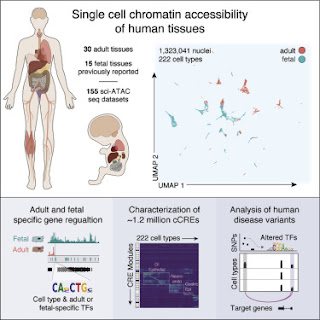I've been trying to fix the Wikipedia artilce on Noncoding DNA but it's quite a challenge because the page is controlled by editors who are opposed to junk DNA and I am accused of starting an "edit war" that goes against the consensus. On a parallel track, I have proposed creating a separate Wikipedia article on junk DNA where we can present the evidence for and against junk. This is being disussed under the "Talk" thread on the "Non-coding DNA" article.
Here's an exchange bewteen me [Genome42] and one of the editors who exerts control over the noncoding DNA page. It's shows you what we are up against.
Let's get back to the main topic. Is there anyone here who objects to creating a separate page for junk DNA? If you object, please explain why because it seems to me that we really need such a page in order to explain to viewers what the main issues are in the controversy. We need some place to put all the evidence showing that 90% of the human genome is junk and to explain why many scientists reject this evidence.Genome42 (talk) 20:18, 15 May 2022 (UTC)I looked at pubmed and searched for "junk dna" to see how prominent this topic even is. It seems the term is declining in usage in the scientific literature [7] (see the "results by year"). This is despite all of the abundant media coverage it still gets. I would say that if the usage in the scientific literature was rising then perhaps it would be good a good idea, but the reverse is happening. I see an increasing number of papers calling for abandoning the term altogether too. Just an FYI, one of the original reasons for the merge of the junk DNA to this article was that it was causing too much confusion and edit warring as a separate page. When merged you could have the general article on noncoding DNA without the fireworks and a section isolating the controversies coming from it rather than having 2 pages on the same topic with the Junk DNA article mixing controversy with general information on noncoding DNA.Ramos1990 (talk) 21:28, 15 May 2022 (UTC)
Are you serious? Do you really believe that the debate is over and junk DNA doesn't exist just because the opinions you prefer to read are against junk? You don't seem to be knowledgeable about this topic. I can help you get up to speed. Read these articles on my blog.
Also, you seem to be genuinely confused about the difference between junk DNA and noncoding DNA. Think of it this way. Genomes can be divided into centromeric DNA and non-centromeric DNA and the junk is located in the non-centromeric DNA. Does that mean we should have an article on non-centromeric DNA where we discuss junk? We can also split the genome between regulatory DNA and non-regulatory DNA but I don't see you calling for an article on non-regulatory DNA where we discuss junk DNA.
The only reason why you favor discussing junk DNA in a article on non-coding DNA is because you think that junk DNA was once defined as non-coding DNA and this article will prove that some non-coding DNA has a function - therefore it is not all junk. That's an extremely biased, and incorrect, view. No knowledgeable scientist ever defended the claim that all noncoding DNA was junk. Do you think we didn't know about noncoding genes, regulatory sequences, and origins of replication back in the 1960s?
Genomes can be separated into functional DNA and junk DNA and that's where the debate is. The non-coding DNA fraction is a heterogeneous mixture of functional elements and junk DNA and it's very confusing to mix them. An article on junk DNA will discuss all of the various functional regions of the genome and how common they are in the human genome. We will see that if you add them all up you only get to about 5% of the genome. The article will discuss the evidence for junk DNA and the arguments against claims for abundant function. None of that is appropriate in an article on non-coding DNA.
It's easy for me to see why there was "edit warring" over a junk DNA article. It's because many of the editors here are opposed to junk DNA so they try to suppress the legitimate scientific debate. You need to recognize that what you are doing here is expressing a very personal and biased opinion about the topic of junk DNA and you are using your position to start edit wars in order to censure any views in favor of junk DNA. Genome42 (talk) 14:49, 16 May 2022 (UTC)












